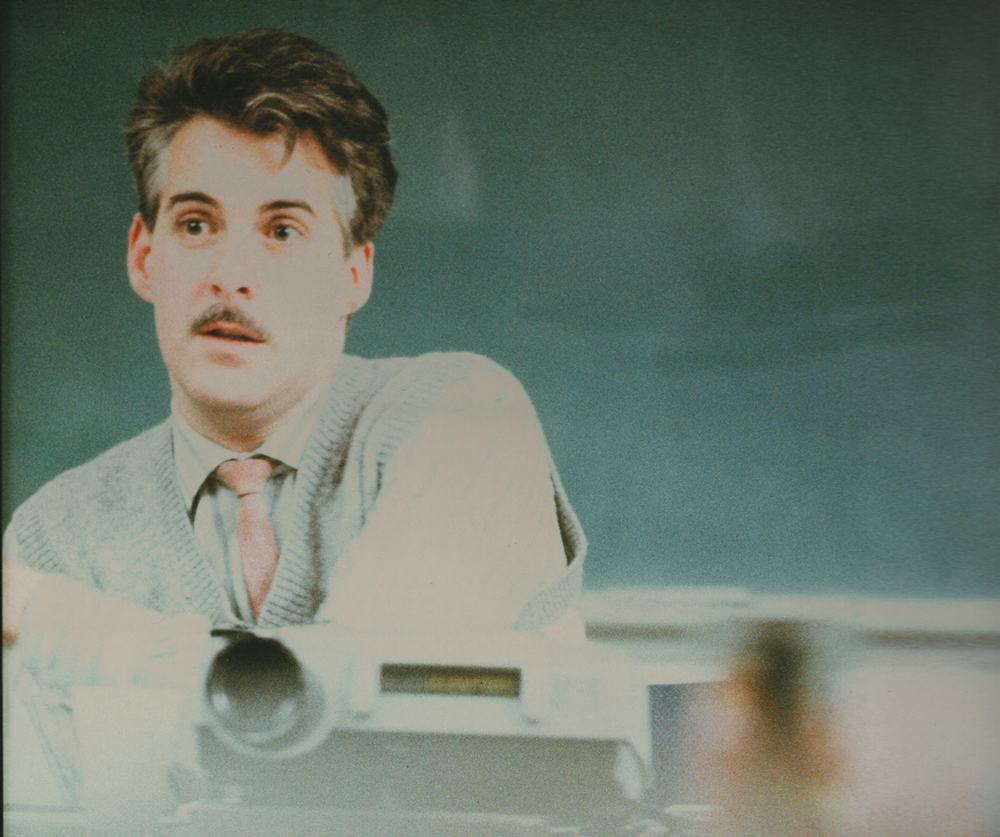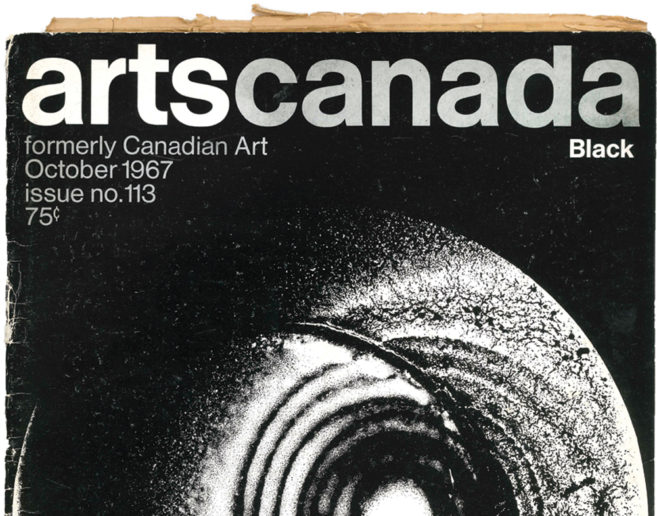In his autobiography, Before Pictures (2016), art historian Douglas Crimp tells the parallel stories of his life as a gay man and emergent art critic in New York in the 1960s and ’70s. Crimp chronicles his sexual encounters and love affairs while commenting on the city’s burgeoning contemporary art scene. In the grey zone between these two narratives, he addresses the emergence of the queer culture that preceded the AIDS epidemics.
Quebec critic and art historian René Payant, a gay man from the same generation as Crimp, did not leave any memoirs, nor archives, after he passed away from an AIDS-related disease in 1987. What’s more, he often questioned the use-value of biographical narratives in his writings. Payant lived before the political uprising of the following decade, which empowered people with AIDS to assert their rights, and momentarily fortified solidarity in the art world.
Knowing that the end was close, Payant assembled his texts, several of which were then unavailable, into the anthology Vedute: Pièces détachées sur l’art (1976–1987). Yet unlike Crimp or fellow theorist Craig Owens, who are both firmly canonized and widely read as art historians addressing the representation of gay identity, Payant remains largely forgotten beyond small intellectual circles in Quebec.
Several Montreal artists, critics and historians, who studied or started to work professionally during the 1980s, encountered Payant, either in a classroom or at a conference. In 1995, I decided to pursue my studies at the Université de Montréal, where Payant had taught art history from 1979 to 1987. During their seminars, Alain Laframboise, Lise Lamarche and Johanne Lamoureux, who had been very close to Payant as colleagues and friends, encouraged us to read Vedute. Though my relationship with him has been mostly mediated through the testimony of others, it remains intimate by way of another series of circumstances.
Before his death, Payant gave a selection of his books to my university’s library. During my studies, I intermittently found these volumes in the stacks, their pages marked with his marginalia. I began to imagine the path of a young art historian forging his way in the academic and contemporary art world. Through these underlined passages, scribbles and sometimes intricate diagrams, Payant had a spectral afterlife.
From the beginning of his career, Payant attempted to distinguish his approach from the connoisseurship at the root of art history’s core imperatives of attribution and interpretation. During the 1970s in Quebec and elsewhere, the field of semiotics bridged the gap between disciplines of the humanities, for better or worse. Payant embraced this “turn,” though he never allied himself firmly with any single school of critical thought. Instead, he adapted academic language to new positions and formats while discovering contemporary art practices that challenged these frameworks of analysis.
In 1979, Payant co-organized Situation du formalisme américain, an international symposium at the Musée d’art contemporain de Montréal that reappraised the legacy of Abstract Expressionism beyond American borders. While it is standard Canadian art history to mention Clement Greenberg’s visit to the Emma Lake workshop in Saskatchewan in 1962 as a pivotal moment in our relationship to avant-garde painting south of the border, little has been published in English about the assimilation of modernism in Quebec apart from the Automatistes, the Refus global manifesto, and later, the rise of the Néo-plasticiens. Ultimately, Payant and his colleagues hoped to build a critical apparatus that would link the peripheral history of painting in Quebec to its better-known American and European manifestations.
That same year, French philosopher Jean-François Lyotard published the book-length version of his landmark study La condition postmoderne: Rapport sur le savoir on the value of university knowledge in computerized societies. Despite the fact that he was in conversation with Lyotard, Payant remained less interested in the report’s observations on the end of the grand narratives of progress and emancipation. He focused instead on an aesthetic understanding of postmodern thinking that could foster a cohabitation of styles.
Payant’s friendship with painter Louise Robert, which started in the late 1970s, is one instance of the way he recognized the chasm of the figural and the discursive in art. Robert’s paintings brought together gestural abstraction and poetic language written on the canvas in stencilled letters, referring both to the materiality of paint and the irrepressible affects pressing in from outside the frame.
It was also during this period that Payant loosened his grip on the logical squares and grids that conferred him his early legitimacy. He began to appraise more openly the return to figurative expressionism, sculpture’s new theatricality, performance, video and the expanded complexity of installation art.
Although he was reticent to talk about himself, Payant always started to think from the specificity of his own desires. In one essay from 1984 entitled “Rhétorique du corps” he examined gay magazines, films and the work of painters Salomé, Luciano Castelli and Rainer Fetting, to question the internalized opposition between pornography and eroticism. Being well versed in literary theory (he wrote about Marguerite Duras), Payant was also interested in the way art discourse mediated sensorial experience. He addressed the co-dependence of performance’s immediacy and the parallel narratives in which it became enmeshed before or after the event.
Moreover, he was involved in the many debates at the time on the evolving status of photography in contemporary art practices. He raised awareness of the risks of fetishizing the materiality of the image, while cautioning against a return to a banal interpretation of the photograph’s iconographic documentary content.
Despite this openness to the diversity of art practices emerging during the mid-1980s, Payant’s longstanding attachment to the painterly gesture remained a divergent touchstone. While fellow critics, such as Philip Monk, described the embrace of figurative expressionism by the market as mostly “passive,” and championed artworks promoting the active deconstruction of various subject positions in the representation of sexual difference, Payant envisioned painting as inherently endowed with a libidinal economy beyond gender assignations, resistant to communication and even commodification. In several instances, Payant wrote or spoke about feminism as an ally, but it seemed that he remained at the threshold of other aspects of the identity politics that fuelled visual arts at the time.
Thirty years after Payant died, his loss is still deeply felt among those who crossed his path, either directly or indirectly. Rare pictures of him still circulate, and only a few audio-visual documents exist in which he can be heard lecturing publicly.
During research for an exhibition a few years ago, I found the recording of a 1984 conference, Art and Criticism in the Eighties, organized by Parachute at the Ontario College of Art. Payant took part, speaking in English with a Quebecois accent. While listening, I tried to imagine what his voice would have been like in his native French.
Until recently I believed that the art historian Claude in Denys Arcand’s 1986 film The Decline of the American Empire was modelled on Payant. In fact, the character was reportedly based on filmmaker Claude Jutra. Still, I continue to project Payant’s features on Claude when re-watching the film. It is from these ghostly traces that resurface in unexpected places and ways—and, of course, in returning to his texts—that, for me, Payant echoes with a lasting presence.
Vincent Bonin is a writer and curator living in Montreal.
This post is adapted from an article of the same title in the Fall 2017 issue of Canadian Art. To get each issue of our magazine delivered to you before it hits newsstands, visit canadianart.ca/subscribe.

 Pierre Ayot, Untitled (Portrait de René Payant) (detail), 1984. Colour photograph. 29 x 21.5 cm.
Pierre Ayot, Untitled (Portrait de René Payant) (detail), 1984. Colour photograph. 29 x 21.5 cm.







